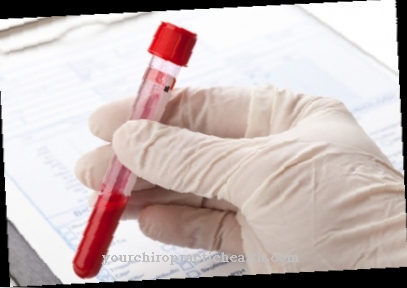General practitioners are usually the doctors who are most frequently consulted for physical complaints. If they cannot treat them themselves, they coordinate further treatment with specialists and coordinate the treatment of their own diagnostics with the findings of the specialists.
What is general medicine?

Human medicine is made up of 32 different specialist areas. One of these sub-areas is General medicine. A general practitioner, also known as a general practitioner or general practitioner, is the first point of contact for patients if they are ill or have complaints that require medical attention.
As the name suggests, general practitioners are responsible for the general health of the patient. In most cases they have their own practice as family doctors. General practitioners usually have a steady patient base for years and know the medical history of their patients and their families in detail.
This personal relationship makes you an important person of trust for patients. On the basis of the often very subjective description of complaints, a general practitioner must make the correct diagnosis and initiate treatment or, if necessary, refer the patient to a specialist for further examination or treatment.
Treatments & therapies
The specialty of general medicine includes the basic care of all your patients, be it with acute complaints, as an emergency or for pre- and aftercare. They are trained to treat diseases that do not require specialist knowledge beyond basic care. If they cannot afford this in the context of basic care, they refer their patients to specialists who have special knowledge and experience in the respective specialist area.
The boundaries between general medicine and specialist medicine are often fluid and not clearly defined. It is true that the health insurances and associations of statutory health insurance physicians specify in their service catalogs which group of doctors can bill which services, but many specialist areas depend on a referral from a general practitioner. In this way, general practitioners take on a control function in medical care and ensure step-by-step diagnostics and, if necessary, work with specialists in order to do justice to their work in the interests of the patients and the demands placed on them by society.
As family doctors, they look after patients and their families and, if necessary, also make house calls when patients are so sick that they cannot go to the practice. They issue prescriptions for medication and other treatments such as massages etc. and, after a referral to the specialist and the diagnosis, take over the treatment of the patient again. You administer injections, e.g. B. in the context of vaccination protection.
General medicine ensures the highest possible quality medical care and has the wellbeing of the patient in mind, but at the same time ensures that it is appropriate, also with regard to the cost factor. However, cost pressure and the resulting less time for individual cases often means that there is little time for a holistic view of the patient.
Diagnosis & examination methods
A careful and comprehensive diagnosis is the most important requirement for adequate treatment. A number of examinations can take place in a general practice with the appropriate technical equipment. The most common examination procedures in general medical practices include preventive examinations. Many diseases can be identified and treated at an early stage through regular preventive examinations.
This is why preventive health care is an important part of general medicine. General practitioners advise their patients which preventive medical check-ups make sense for them and sometimes even carry them out themselves, e. B. Check-ups, assessment of birthmarks to assess the risk of skin cancer, etc. If patients suffer from heart problems or cardiac arrhythmias, an ECG can provide information about possible coronary artery disease (CHD). Since it is sometimes not possible to precisely estimate the situations in which the symptoms occur, a long-term ECG is arranged if necessary, which records the heart's activity over a period of 24 hours and can provide information about possible causes.
The standard examinations include blood pressure and pulse measurements. This can help diagnose high blood pressure (hypertension) or low blood pressure (hypotension). Long-term blood pressure measurement over 24 hours can provide more precise information. If you have breathing problems, your heart and lungs will be monitored with a stethoscope. Listening to the monitor will detect irregular heartbeat or abnormal breathing noises. Many diseases, e.g. B. inflammation, can be determined on the basis of blood, urine or stool tests. For this purpose, blood is drawn from the patient and either examined in the in-house laboratory or forwarded to an external laboratory.
In the case of respiratory diseases, a throat swab is also carried out to rule out a streptococcal infection. Many general practices have sophisticated technical equipment and can also perform ultrasound and X-ray examinations themselves. Some are also able to do pulmonary function tests, which are important for people with chronic respiratory diseases such as asthma. This functional test provides information about the course of bronchial and lung diseases such as asthma and COPD and shows the reaction to the prescription of medication.
It is not uncommon for general practitioners to have additional training in various areas, e.g. B. acupuncture or homeopathy, and are then allowed to make diagnoses and treat complaints in these specialist areas.













.jpg)

.jpg)
.jpg)











.jpg)